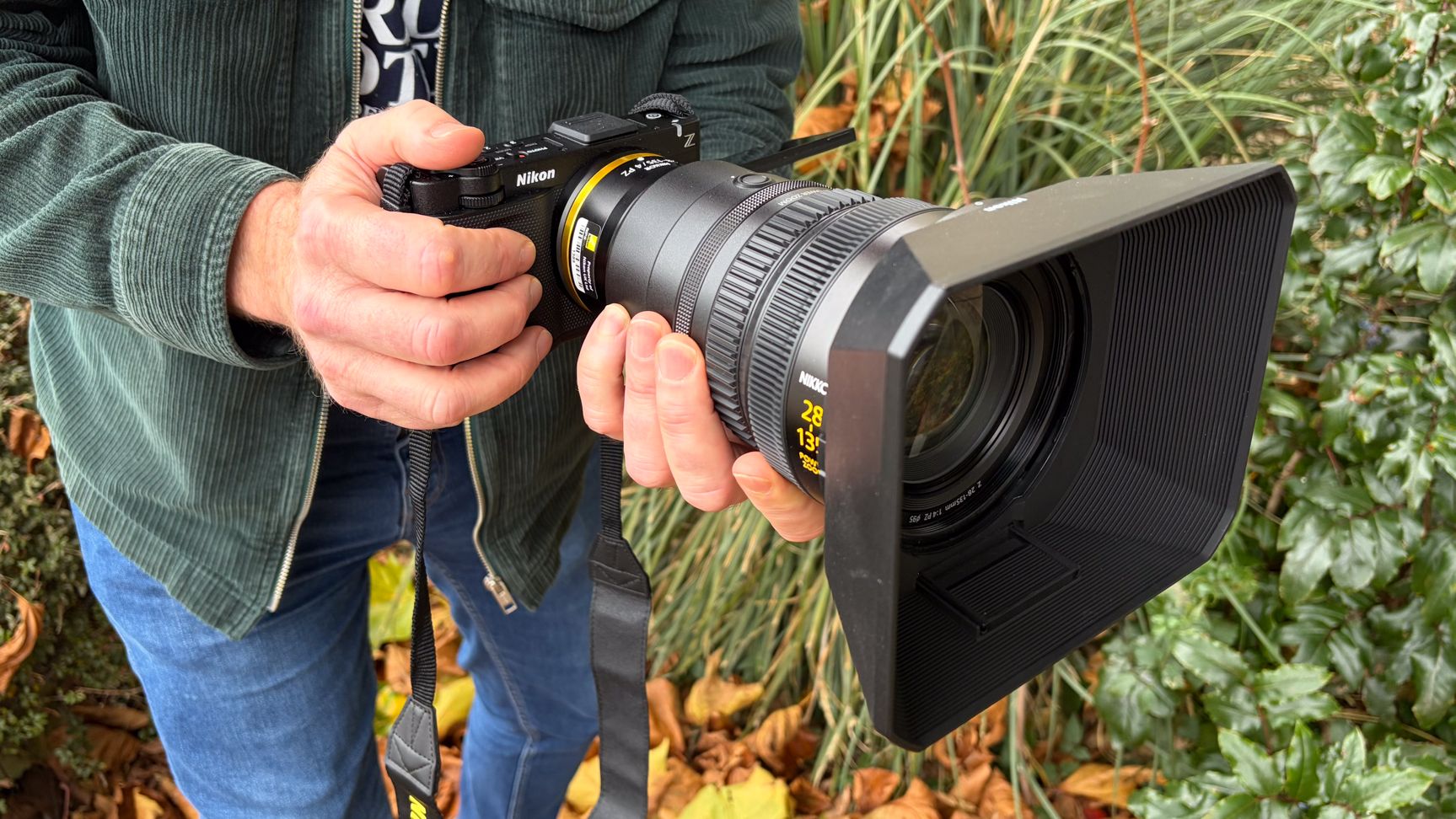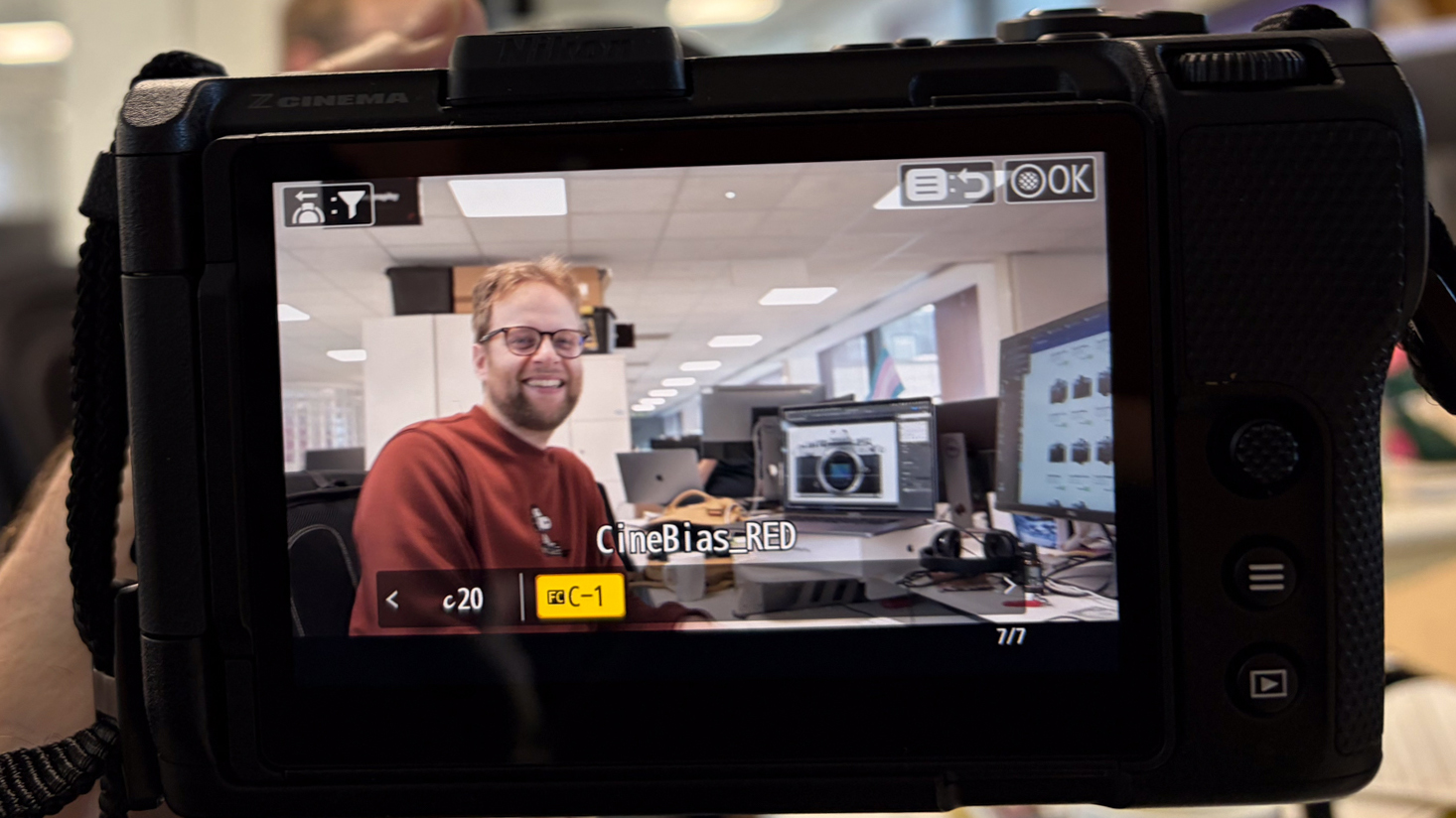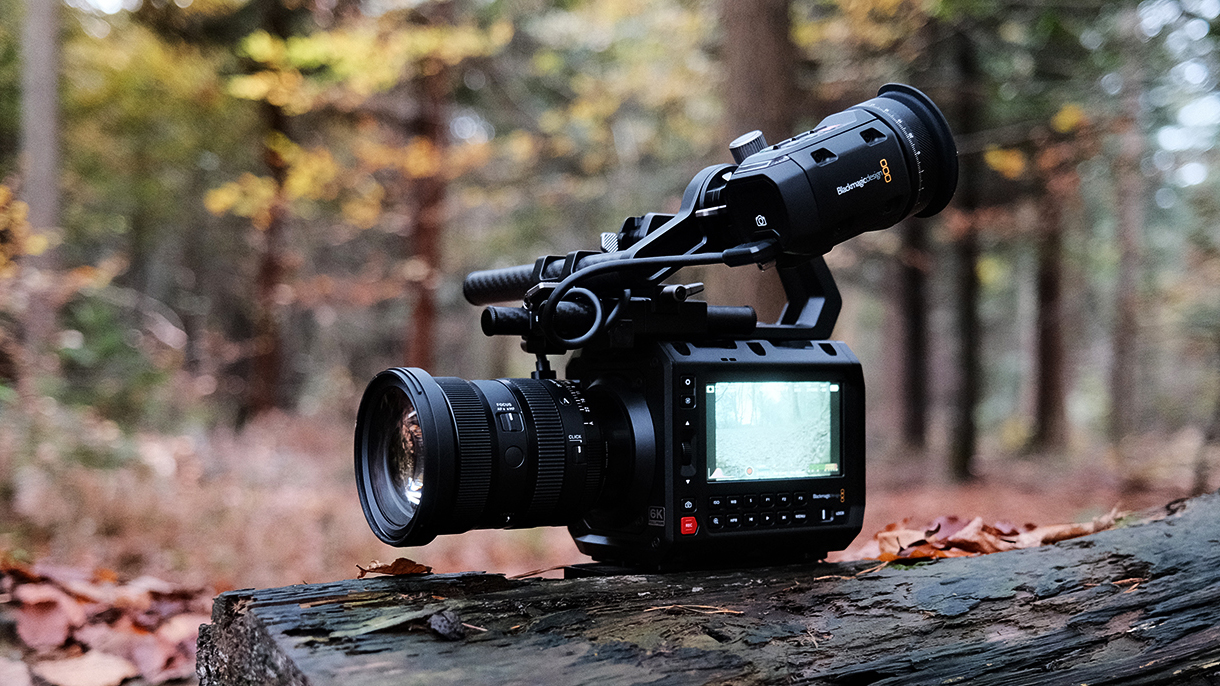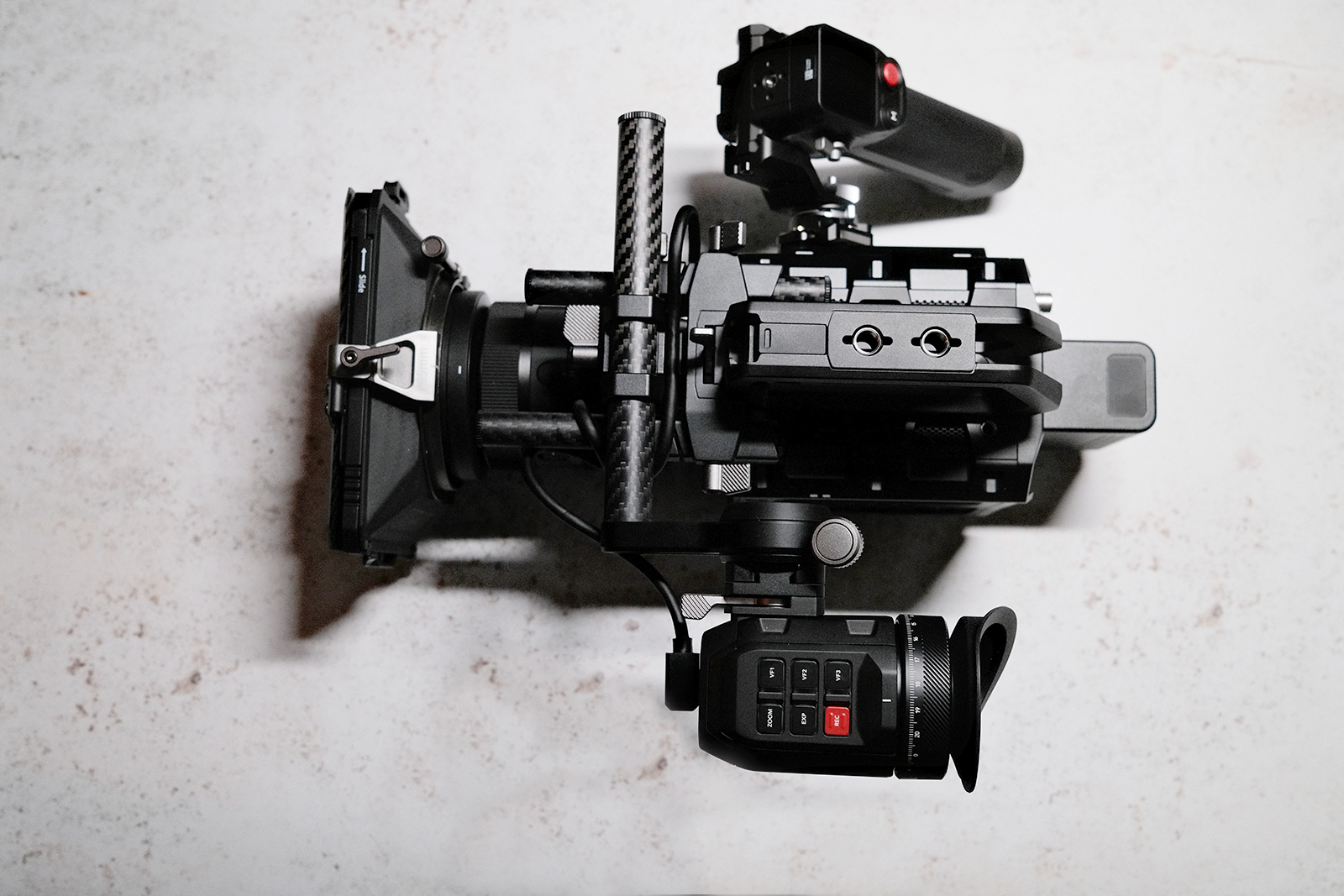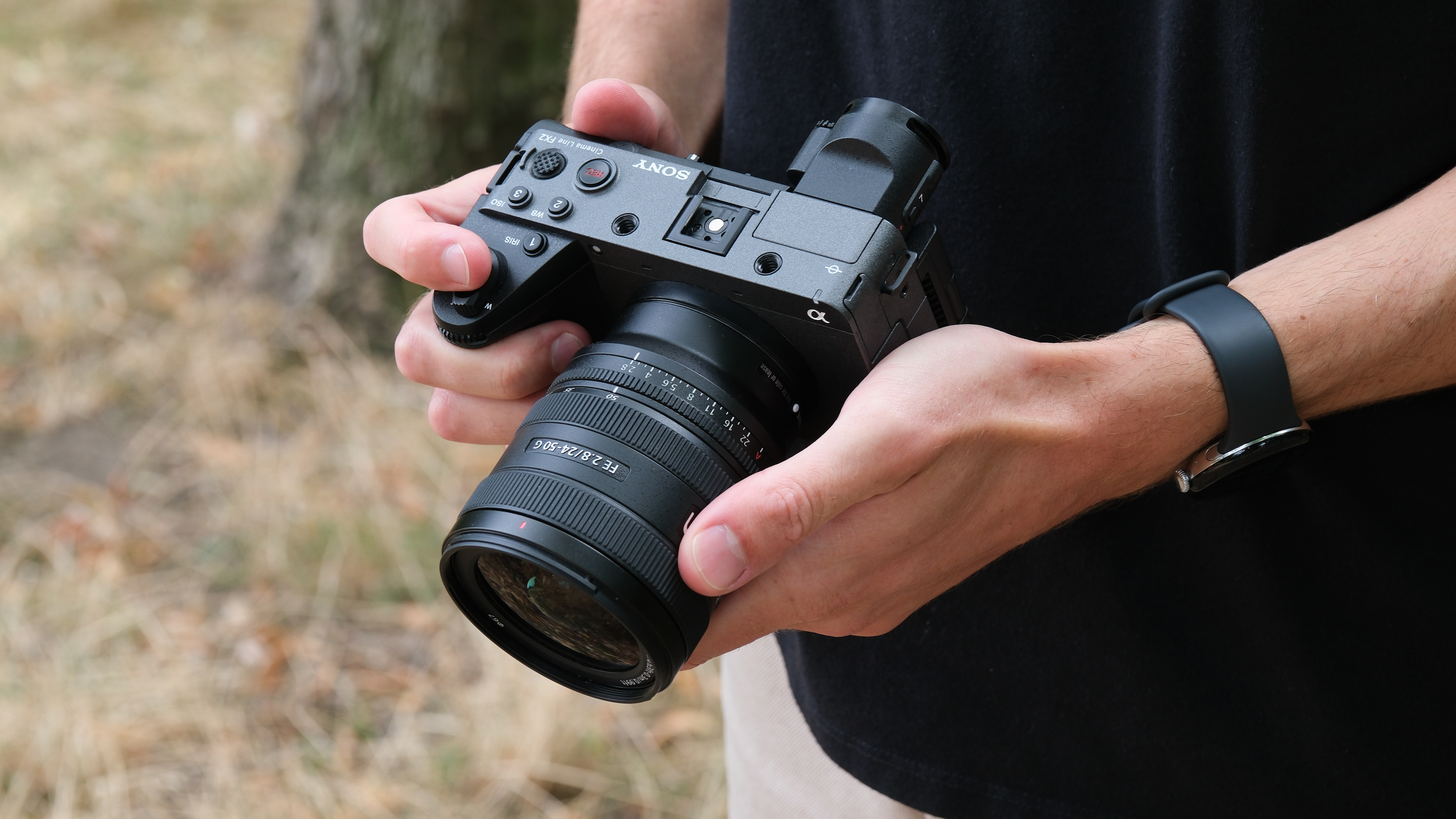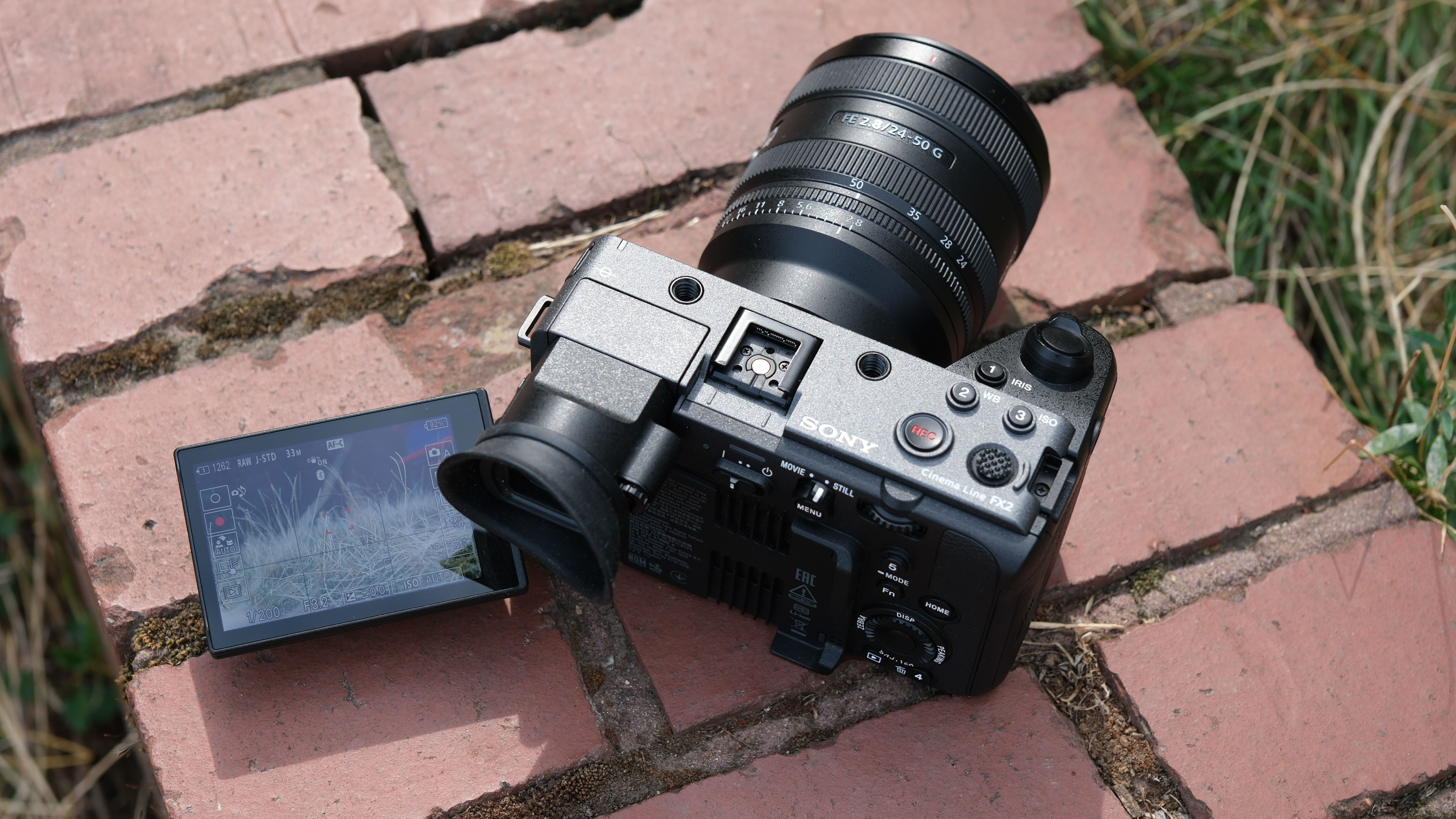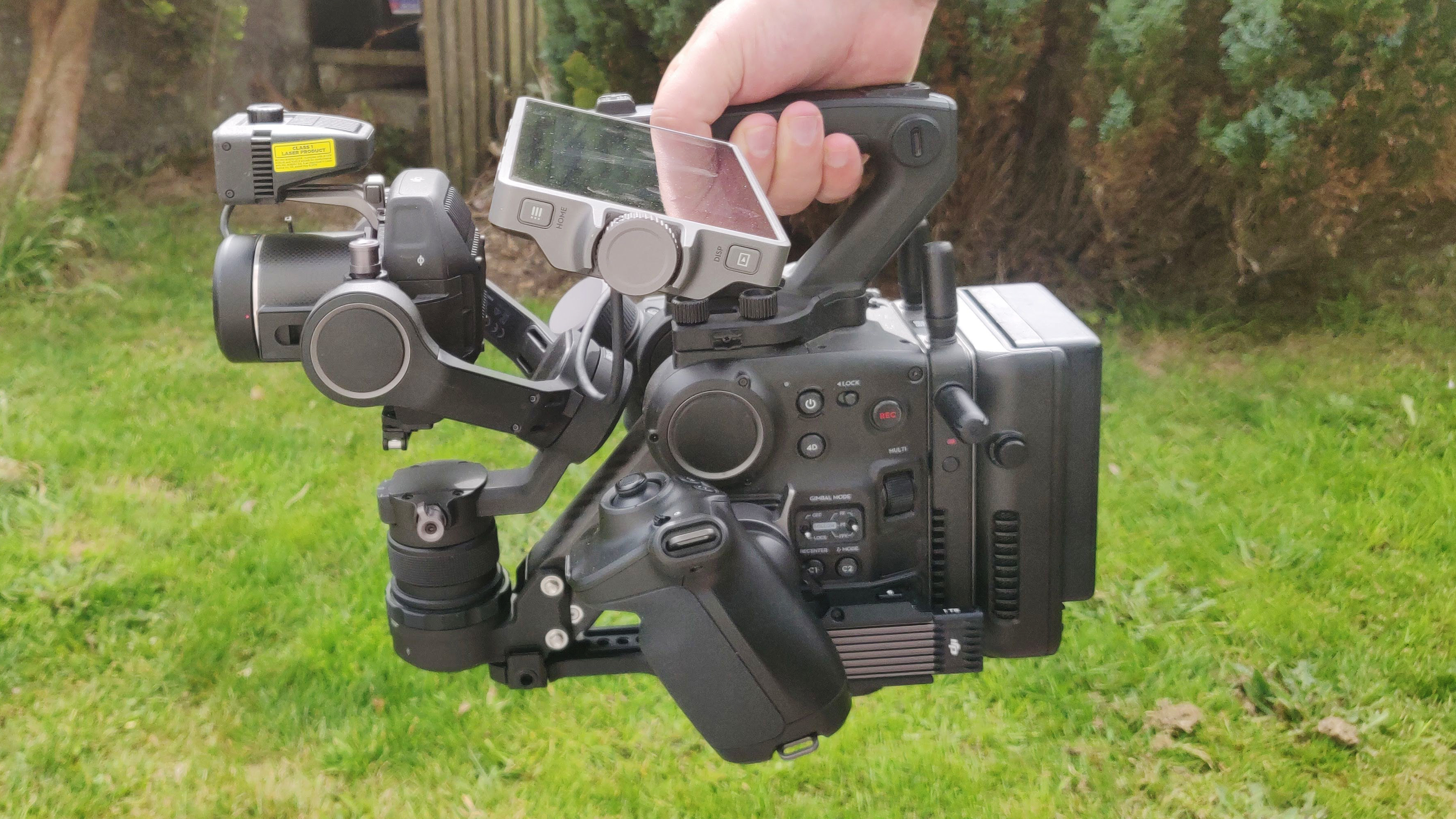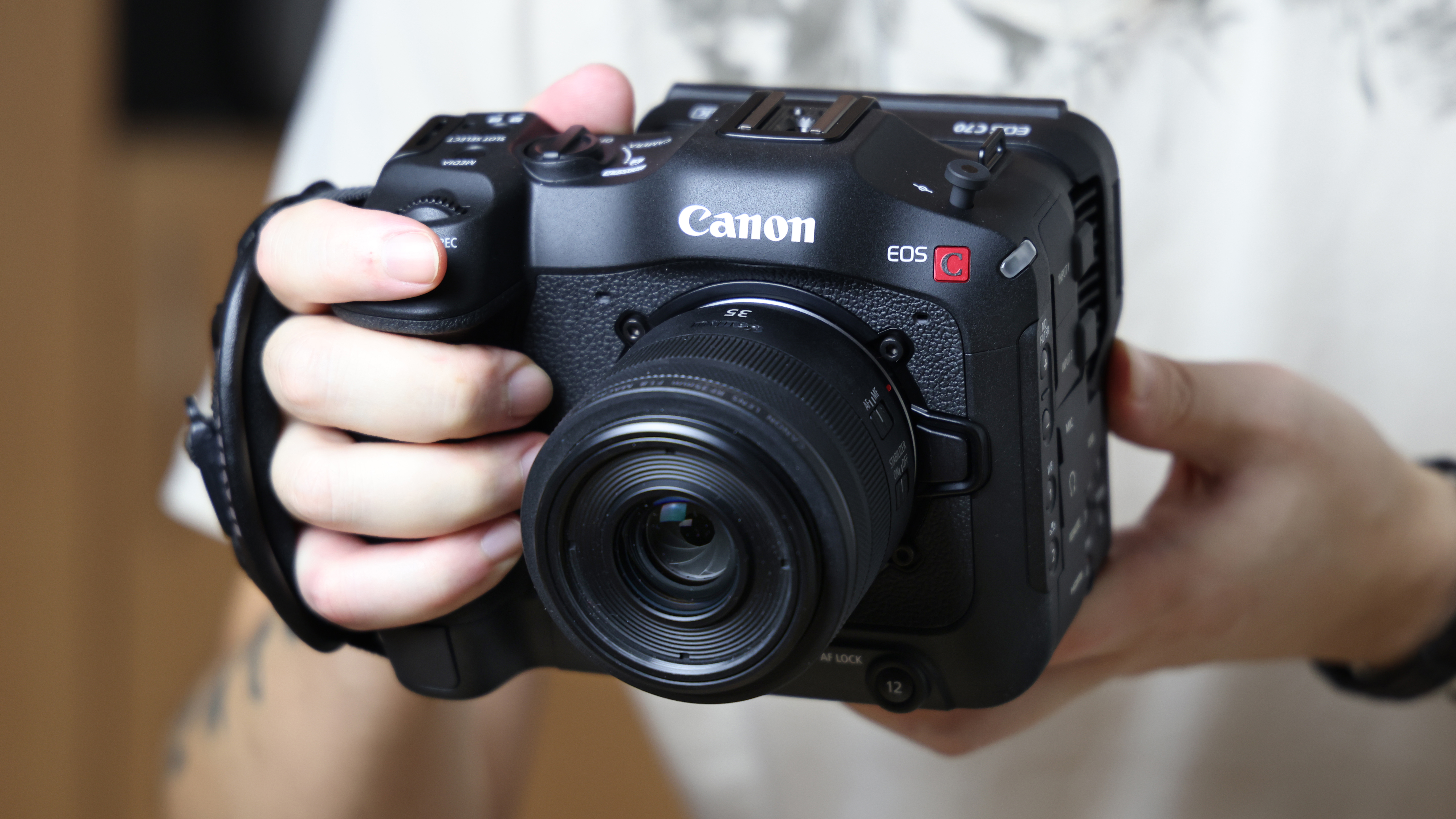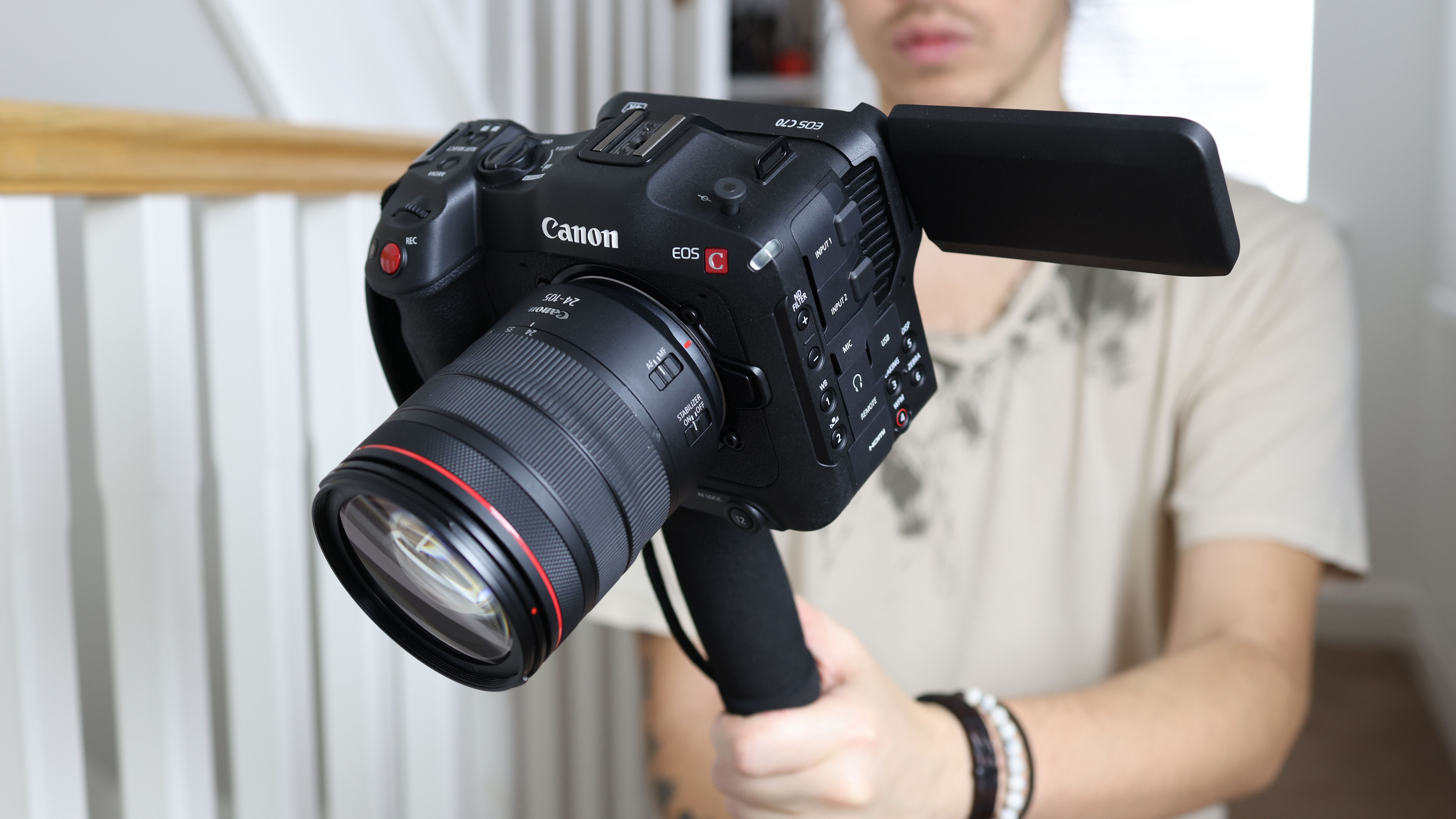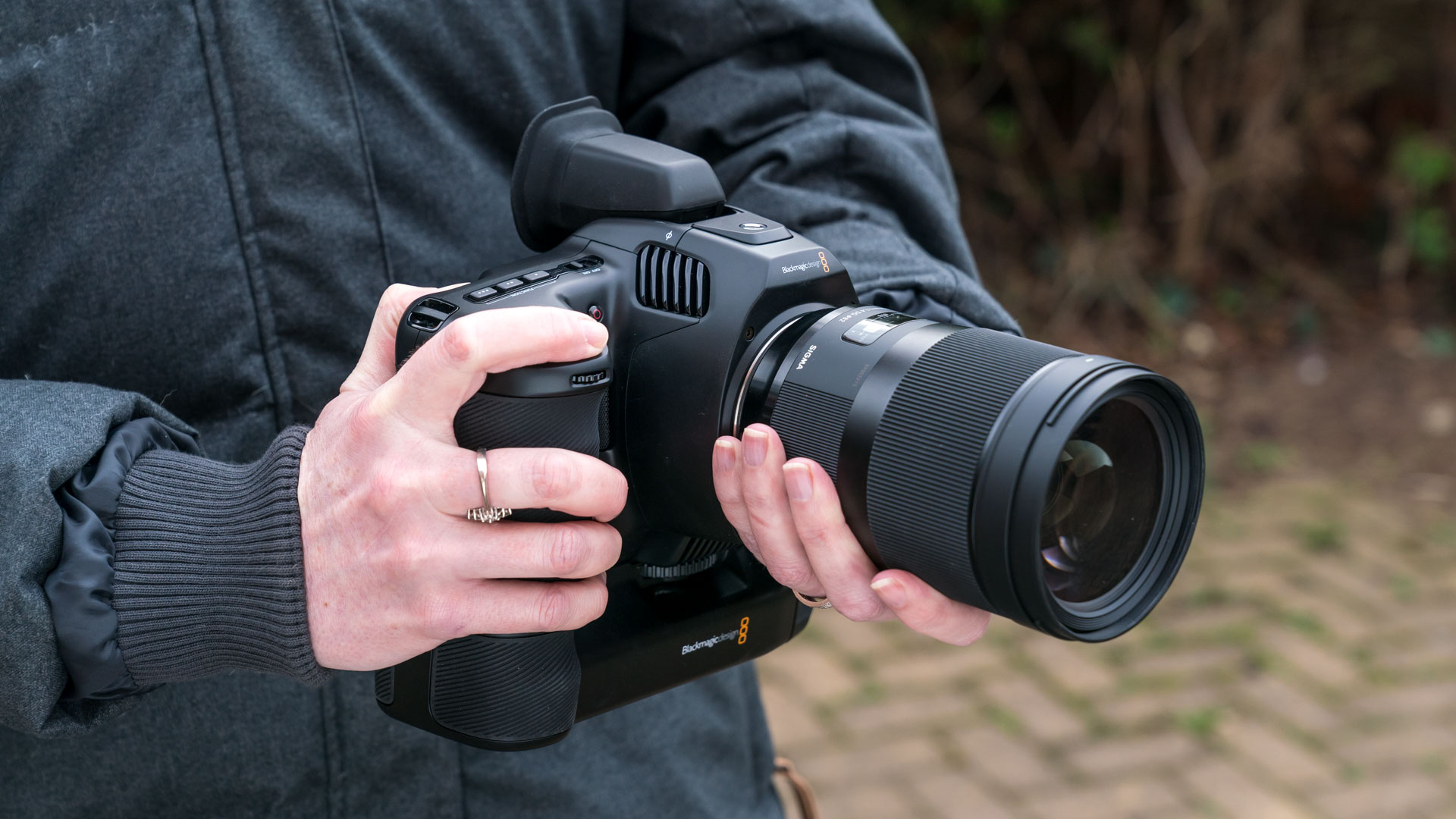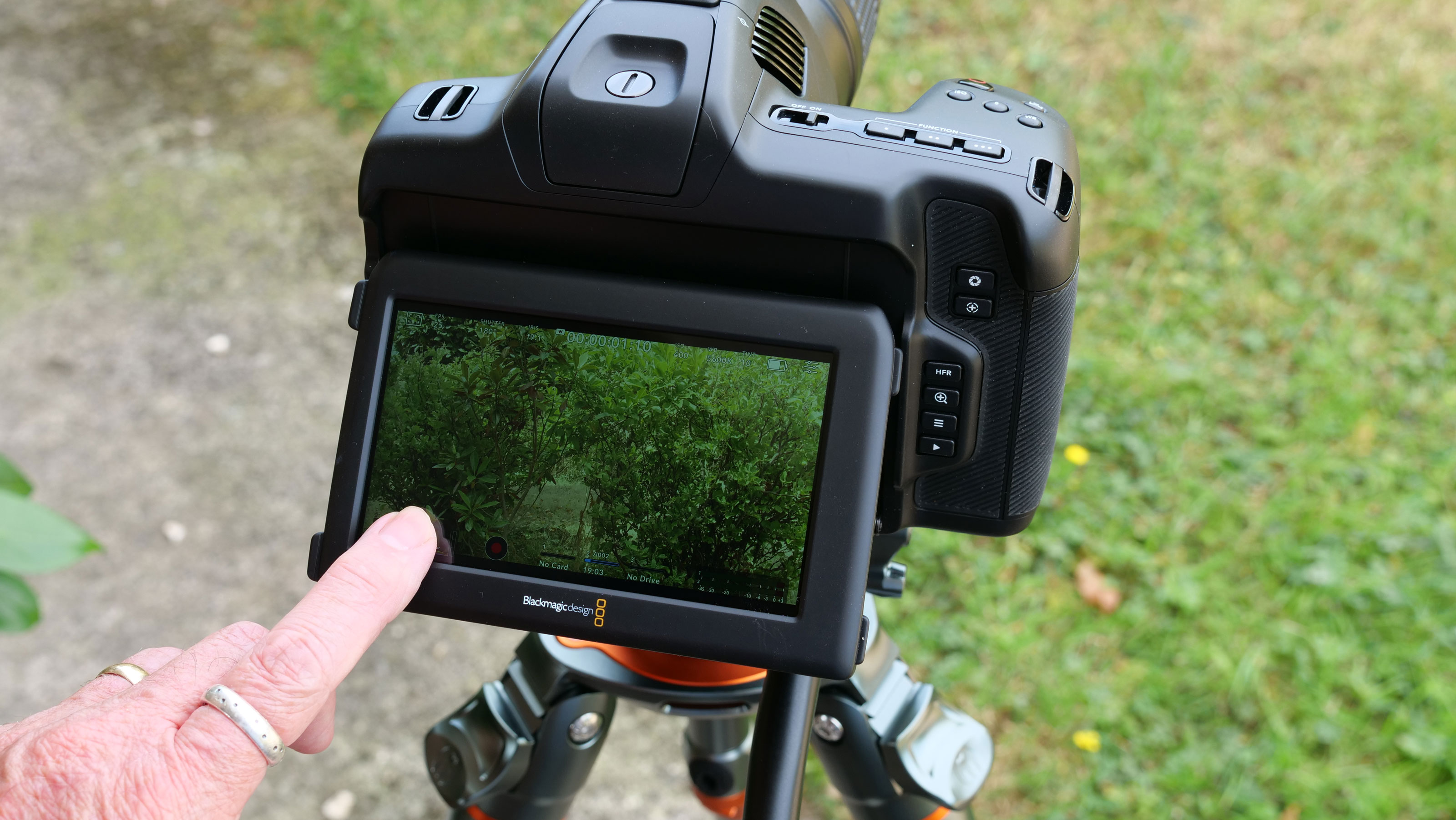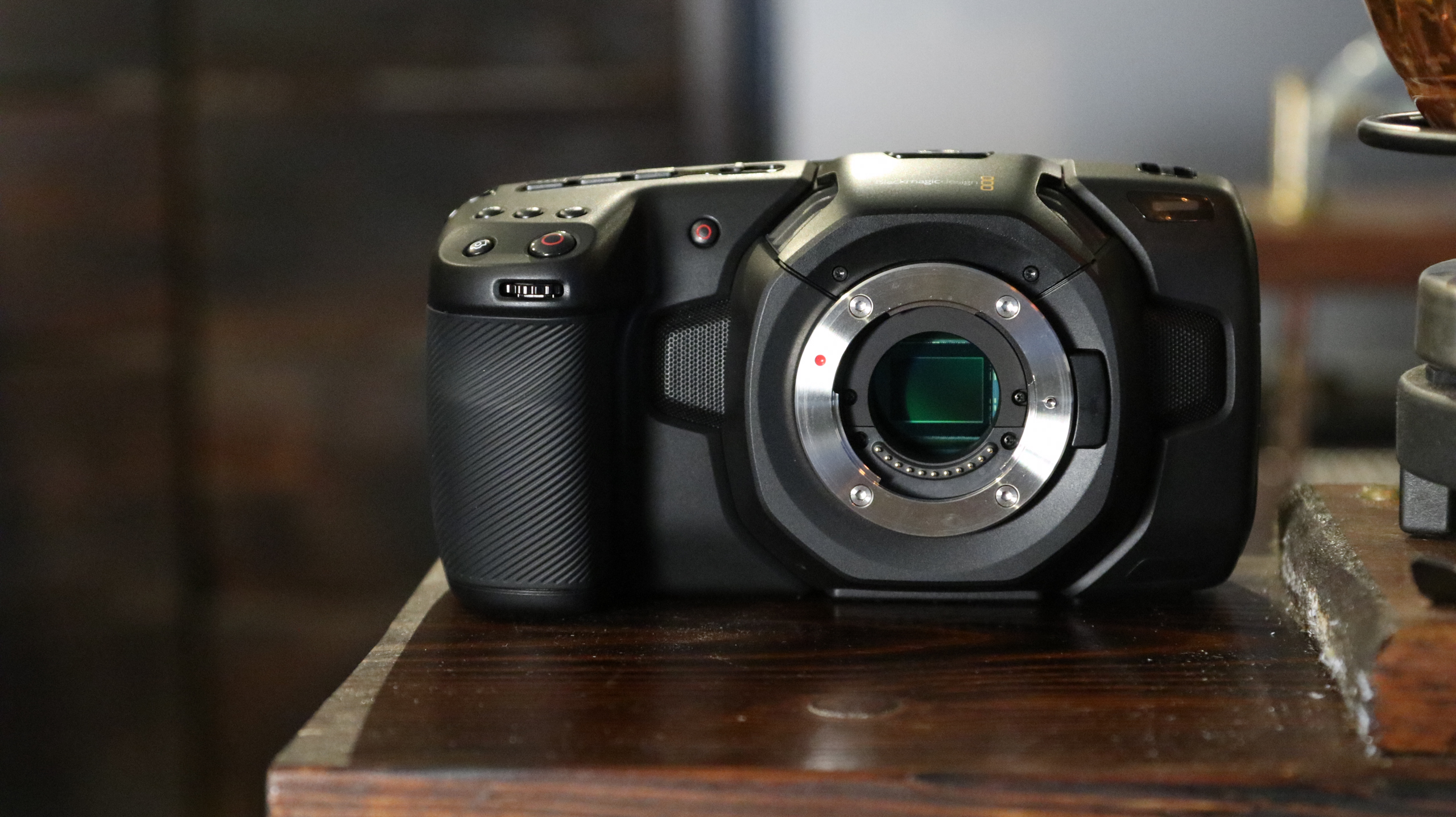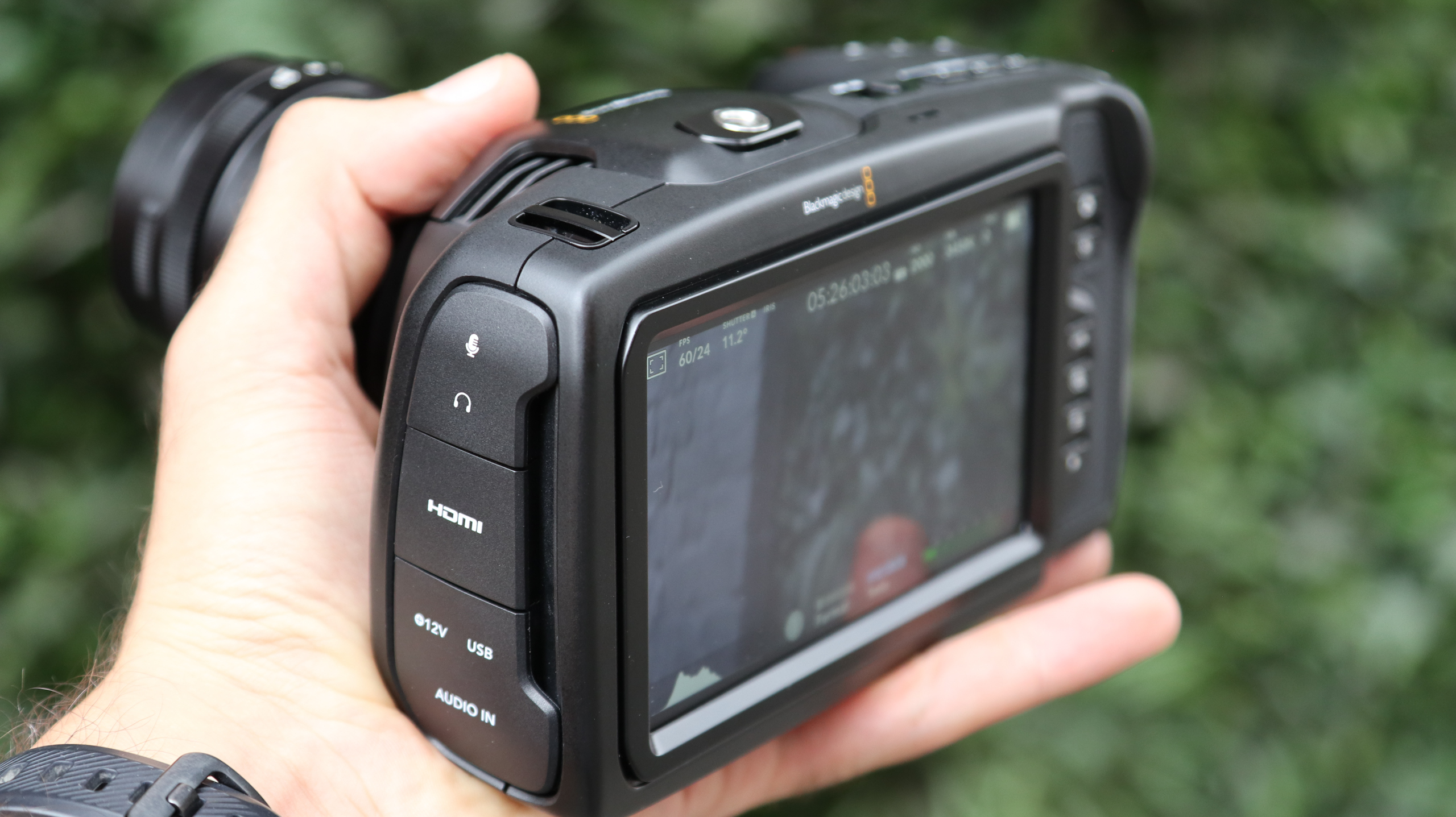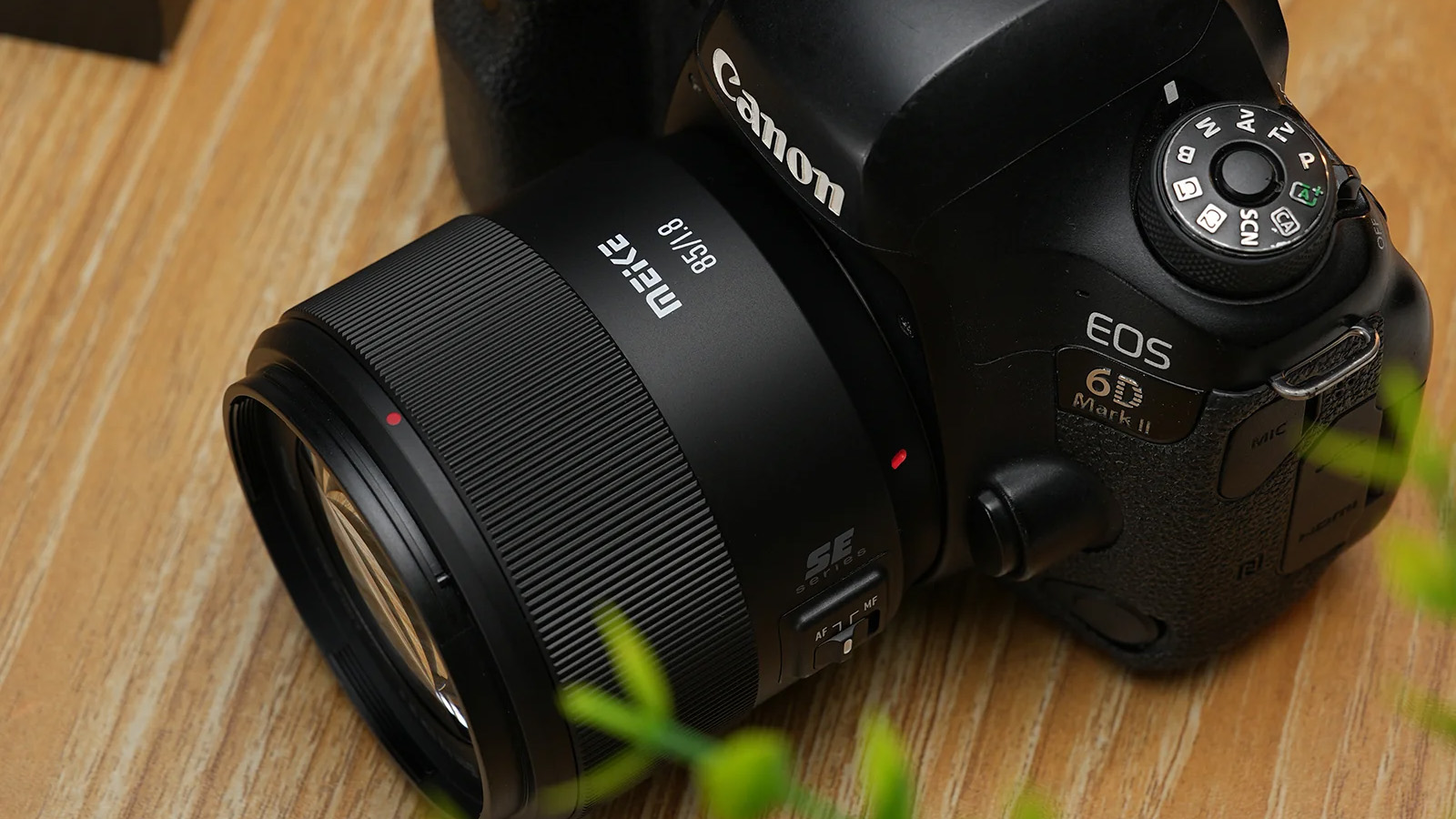The best cinema cameras in 2025: time to step up to serious filmmaking
The best cinema cameras offer top-quality video capture and grading options and the ports and connections needed by pros
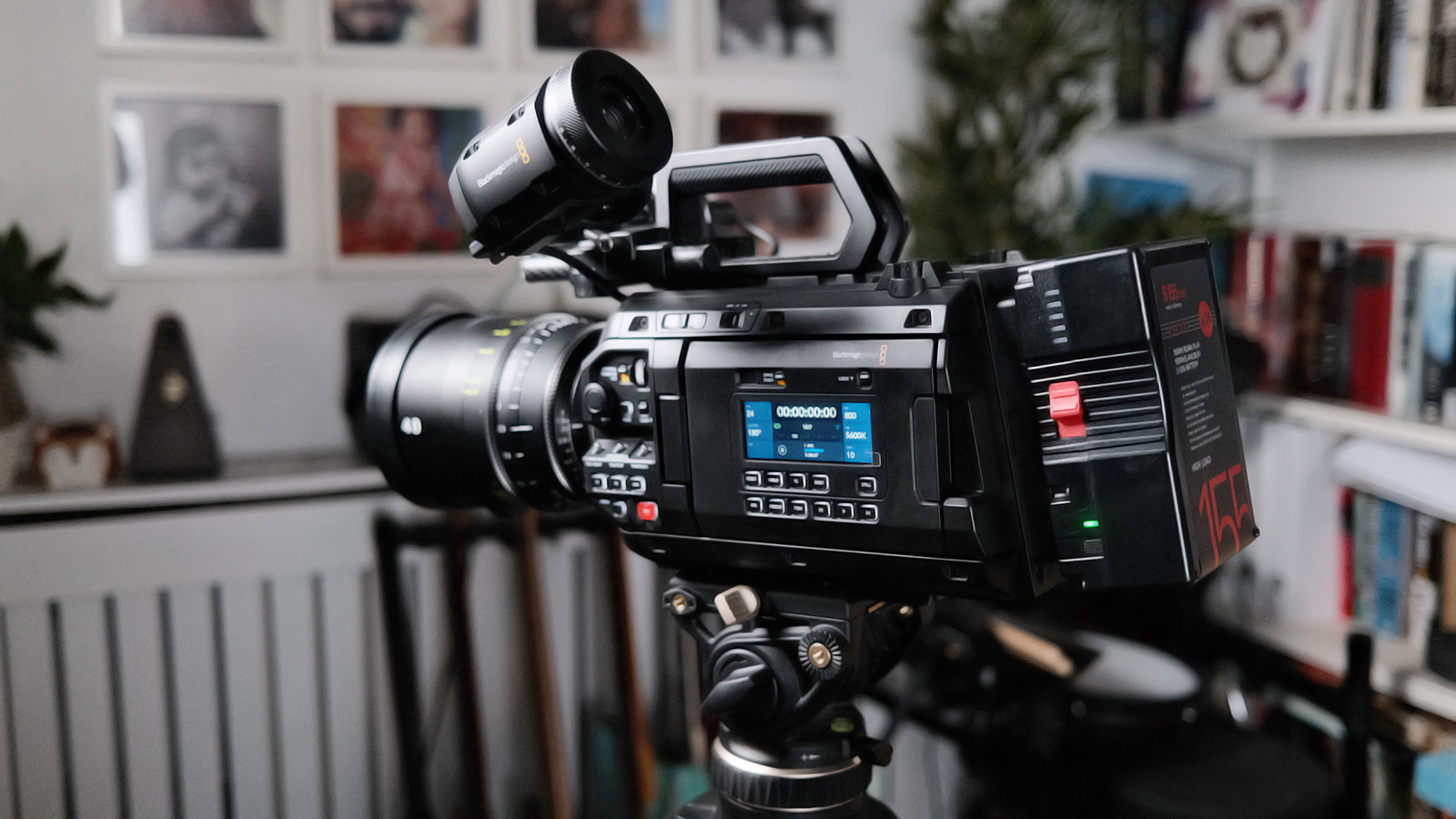
In my years using and testing the best cinema cameras, I’ve come to appreciate just how different they are from standard mirrorless models. Their specs may seem superficially similar, but cinema cameras are very different beasts – built from the ground up for the needs of high-end video productions.
This means things like superior connectivity, a huge range of video shooting options, and modular designs that can be tailored to the user's needs with the addition of accessories. Cinema cameras also often have features that are specifically tailored to team-working, such as multiple screens.
I've only picked cameras that have impressed the DCW team in our full tests and reviews. I keep this list regularly updated – so when we've finished our full testing of the Canon EOS C50, for instance, I expect it'll find its way onto this list. For more video-centric choices, you can also see our list of the best 8K and 6K cameras.
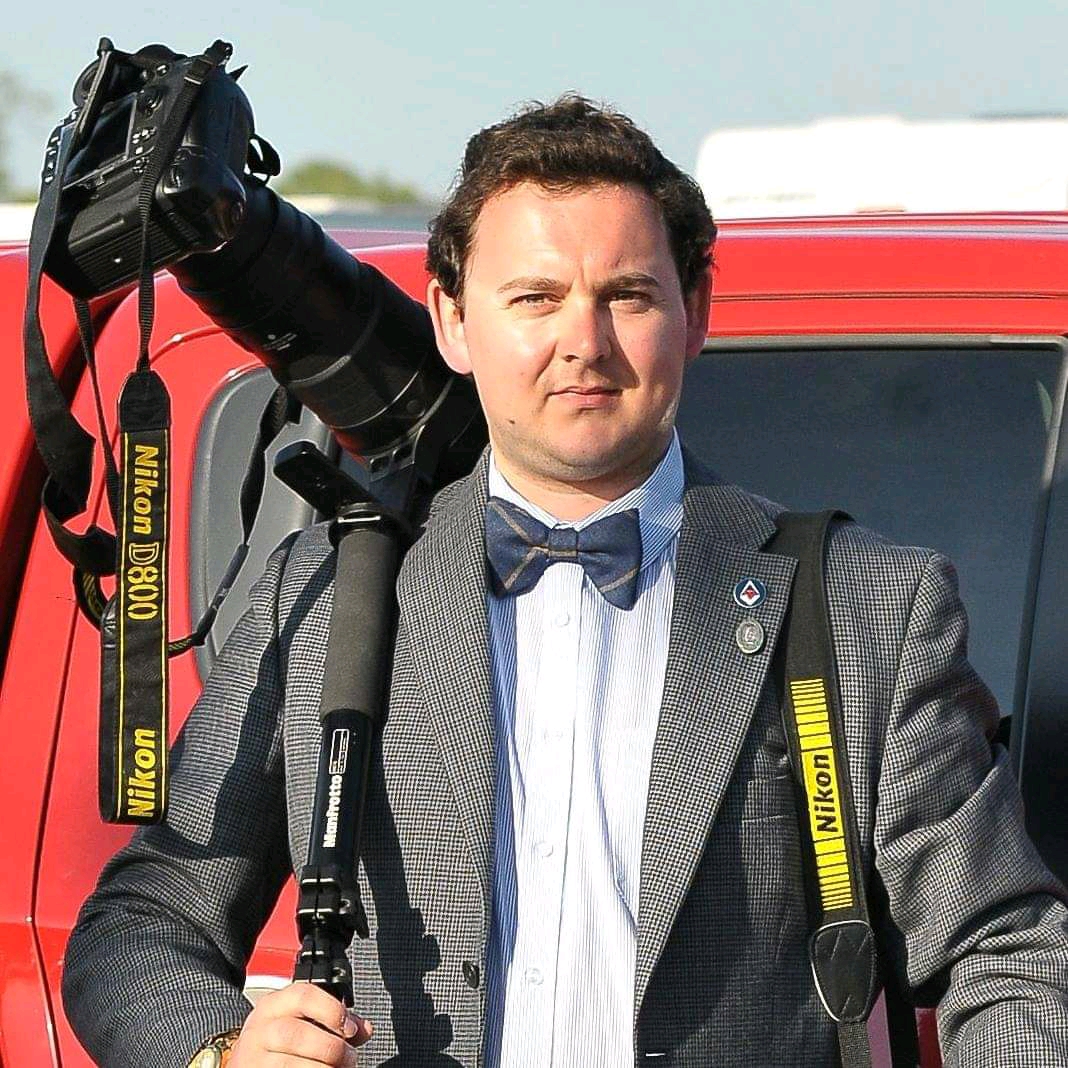
Sebastian is familiar with and shows great interest in street, medium, and large-format photography with products by Leica, Phase One, Hasselblad, Alpa, and Sinar. Sebastian has also used many cinema cameras from the likes of Sony, RED, ARRI, and everything in between.
Quick Picks
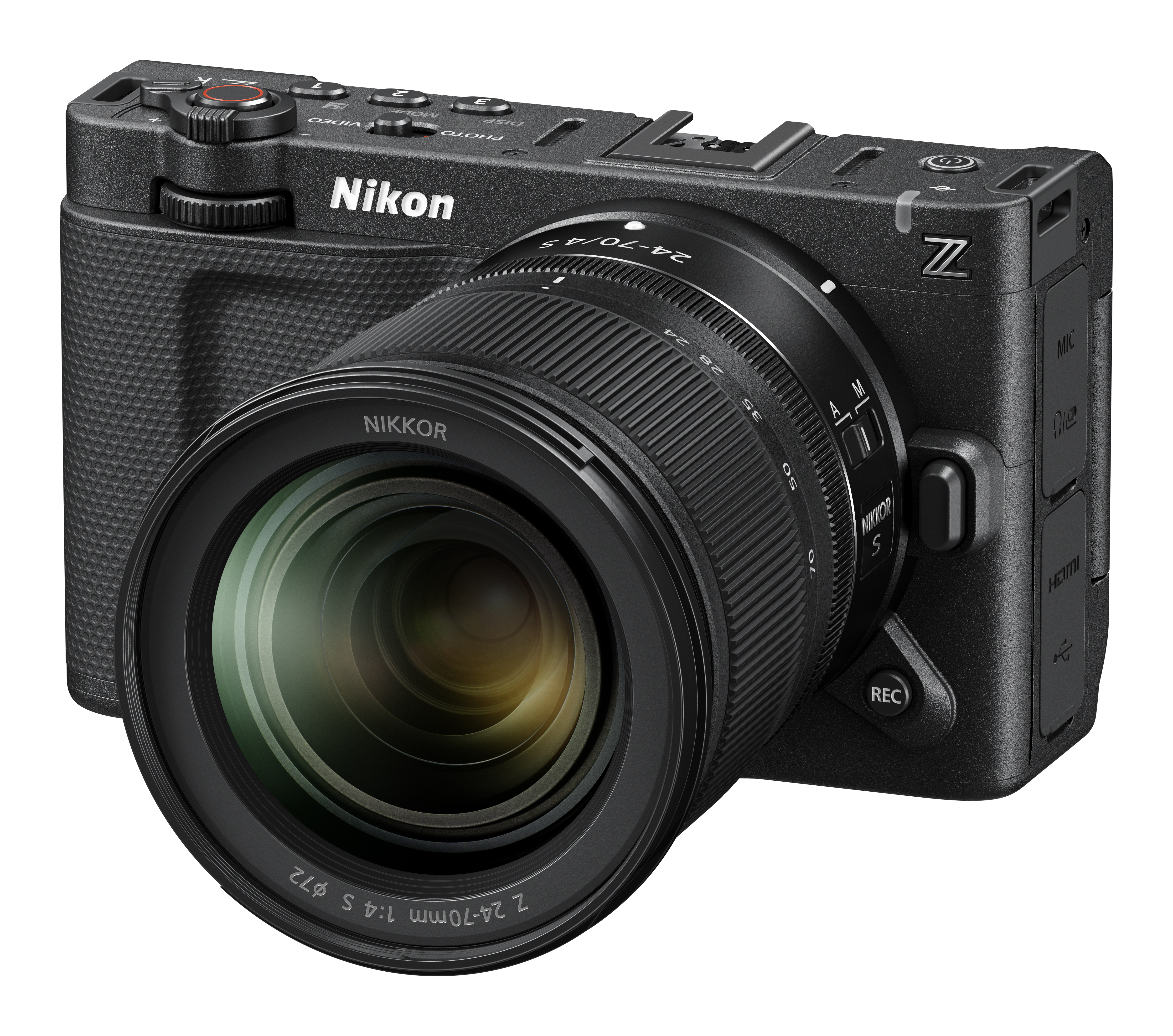
Equipped with RED Color Science, Nikon's entry into the cine camera market arrives with a bang. Its competitive price means it's currently about the best value for money you can get, and its 6K video output is superb.
Read more below
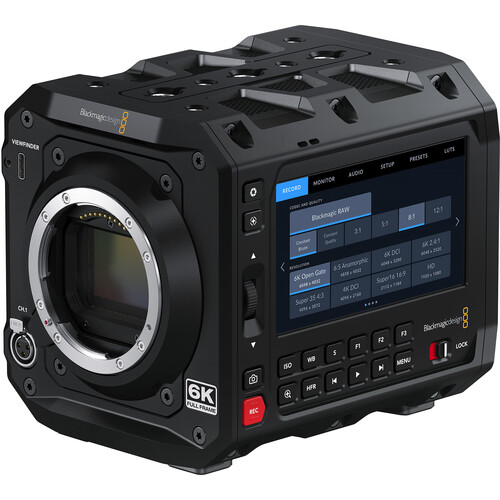
Blackmagic's long-awaited foray into making box-style cine cameras is a winner. Load it up with accessories and you can tailor its functionality to your preferred shooting style.
Read more below
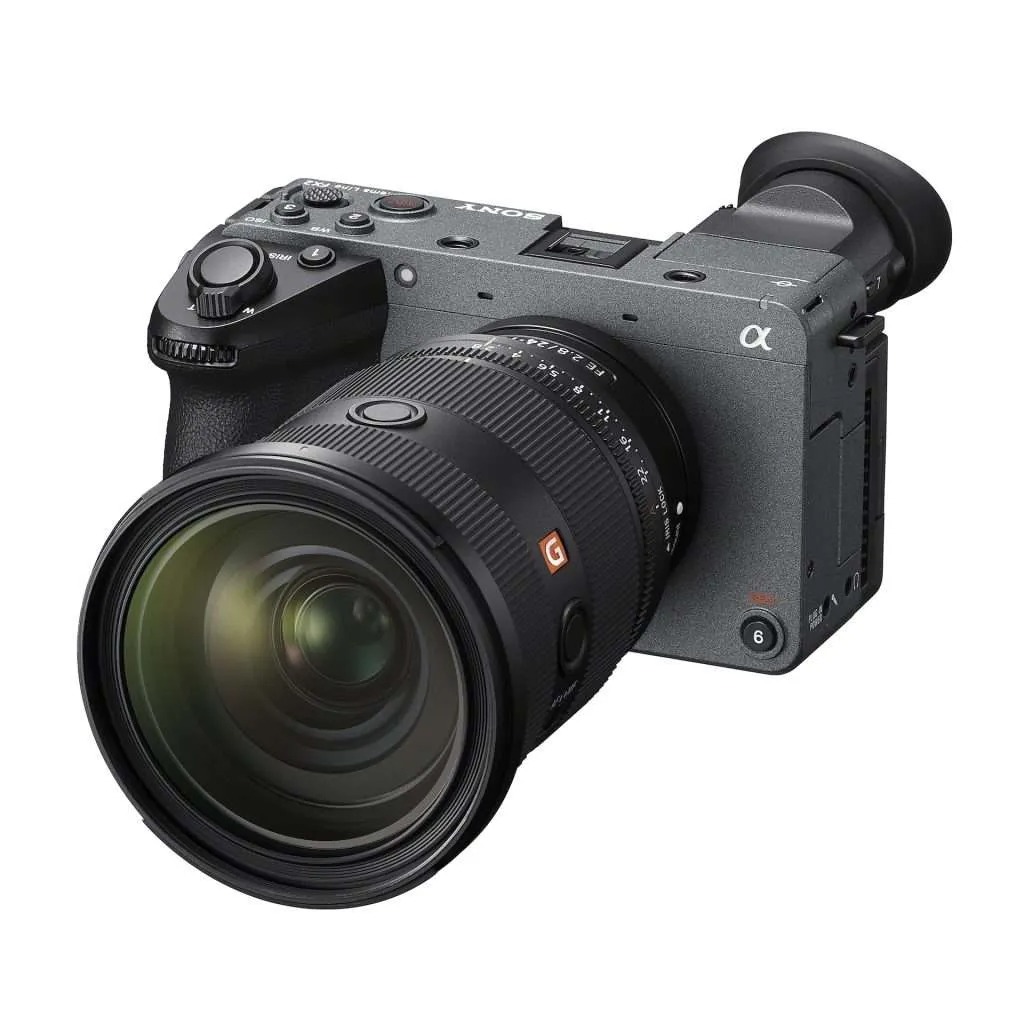
If you're looking for a (relatively) affordable entry point into cine cameras, the Sony FX2 is it. Its sophisticated autofocus and effective stabilization make it an easy camera to pick up and use.
Read more below
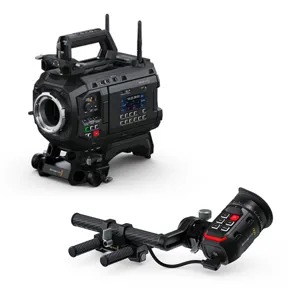
Suppose you're looking for the highest resolution camera that's great for post-production workflows or you want bragging rights. In that case, a 12K camera is one to pick, though it won't come cheap.
Read more below
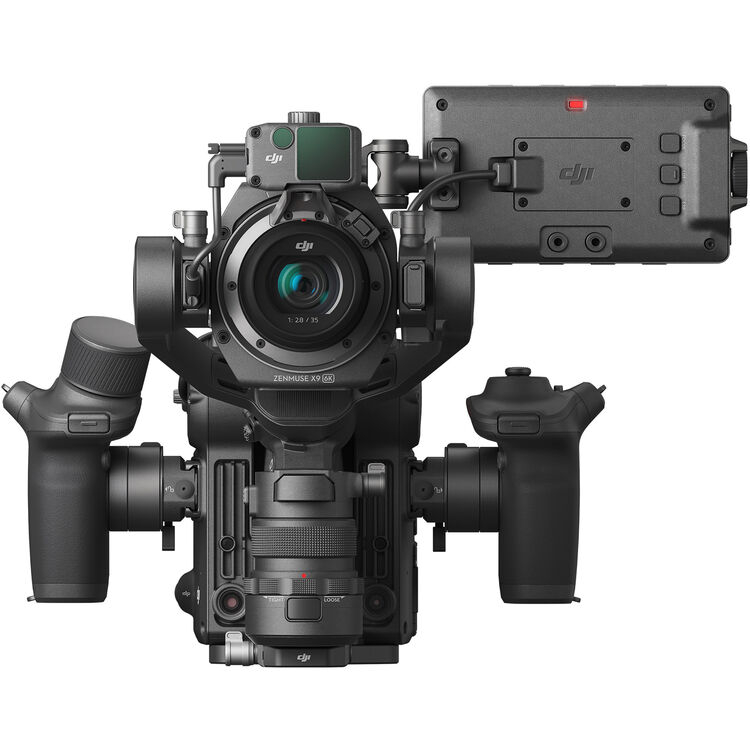
If you love shooting anything with a gimbal, why not have it all the time on your rig? This is a 4-axis camera that provides super-smooth operation, all the time. Its built-in neutral density filters further enhance its impressive versatility.
Read more below
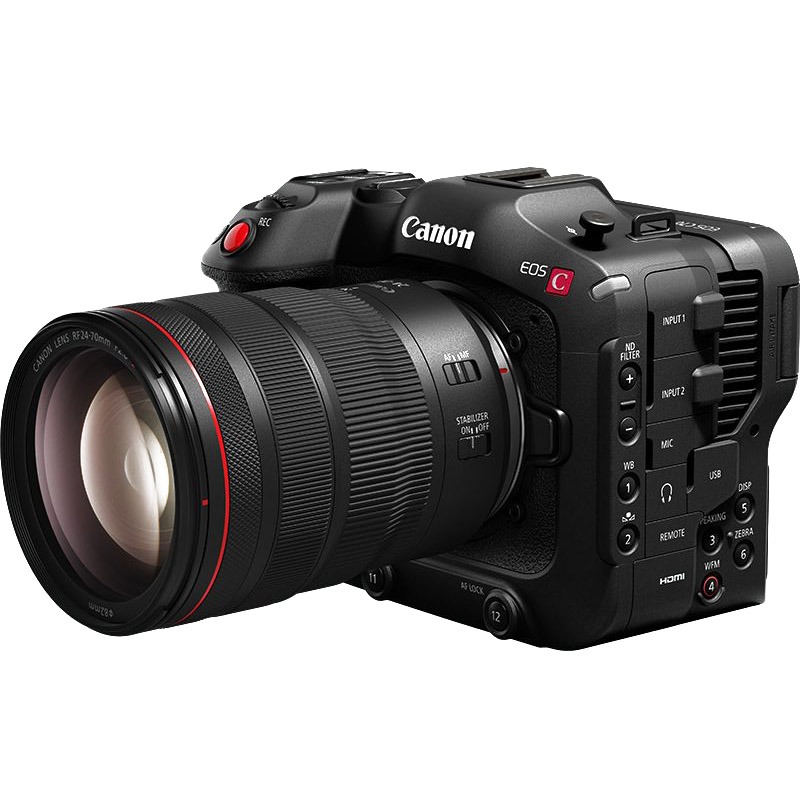
If you want to film Netflix-style docs that hit the big screen with a bang then the Canon EOS C70 is the best option that offers pro-grade features in a portable body.
Read more below
Best cinema cameras
Why you can trust Digital Camera World
Best bang for buck
Specifications
Reasons to buy
Reasons to avoid
✅ You want an instant filmic look: The Red Color Science of the Nikon ZR sets it apart from the competition, with Picture Controls giving instant results.
✅ You want big value for money: The ultra-competitive price point of Nikon and Red's first collaboration makes it one of the best value cine cameras around.
❌ You do a lot of handheld shooting: The slab-like design works brilliantly in a rig, but is less comfortable for extended handheld shooting.
❌ You want full open-gate shooting: The ZR doesn't output 'open gate' video with full sensor readout data – hopefully that comes in a firmware update.
Nikon has announced its arrival in the cine camera game with a bang, in the form of the fantastic ZR. Following Nikon's acquisition of the high-end cinema camera company Red, the ZR comes chock-full of Red's renowned Color Science, which allows this consumer-grade video camera to put out professional cinema-grade footage. And at this price, that is quite something!
Ergonomically, the Nikon ZR is fairly straightforward. Nikon has gone for the 'slab-like' design, producing a cuboid camera that will be a bit of a shock to the system for anyone migrating from SLR-styled mirrorless models. It works brilliantly in rigs or cages, but you're planning on doing a lot of handheld shooting, a wrist-strap or similar safety measure is going to be a must. What's also worth noting is that the rear screen is enormous – a 4-inch vari-angle touchscreen that's fantastic for monitoring.
Footage-wise, the Nikon ZR highly impressed our reviewer Adam Waring. The 6K 60p video output is great, but the real draw is the 12-bit Raw video in the new R3D NE (Nikon Edition) format, which is pretty darn close to Red's 16-bit R3D format, offering a similar look and flexibility. These are big, meaty files that require a powerful computer and absolutely eat through card space, but the processing latitude is huge. Of course, if you prefer not to spend too much time processing, you can use the Red Picture Controls to apply cinema-grade looks in-camera.
Some may be annoyed by the lack of open-gate video (though Adam thinks, and I agree, that a firmware update could deliver it in the future). However, in practically all other respects, the Nikon ZR is an incredibly highly specced cinema camera that puts more expensive rivals to shame. In terms of bang for your buck, this is the one to beat.
Read our full Nikon ZR review for more details
Specs | Outcome | Rating |
|---|---|---|
Resolution | 6K | ★★★★★ |
Dynamic range | 15+ stops | ★★★★★ |
Usability | solo, commercial, and Hollywood | ★★★★ |
Best box camera
Specifications
Reasons to buy
Reasons to avoid
✅ You want a versatile setup: The box-style design with multiple rigging points makes the Blackmagic Pyxis highly customizable to the user's preferences.
✅ You want 6K: This handy camera delivers stunning 6K full frame footage in a compact package.
❌ You want cinema-quality footage out of camera: The Pyxis produces footage that requires a little work in post-processing to really shine.
❌ You want maximum dynamic range: While the 13 stops of dynamic range from the Pyxis is certainly generous, others on this list offer more.
Users who were dissatisfied with the ergonomics of Blackmagic's Pocket Cinema range have been champing for the manufacturer to release a box-style camera for some time. It has finally arrived in the form of the Pyxis, which at an asking price of less than $3,000, should prove tempting to plenty of users. Sure, there are some omissions – no articulating screen, no built-in ND filters – but as we found when we gave the Pyxis a full test, what you get here is a hugely versatile and capable cinema camera.
Our reviewer Rob Redman took a deep dive into the Pyxis 6K's capabilities, and came away impressed. The image quality it produces proved to be absolutely excellent, even if a little post-production work was required for it to look its best, and the ergonomics of the camera made it a pleasure to shoot with. Like with many box cameras, you get out what you put in, and if you take the time to kit out the Pyxis 6K with your favorite accessories and set it up the way you want it, you'll easily fall in love.
The BRAW codex, with its multiple compression settings and gen 5 color science, offers a huge amount of flexibility for any shooter. Having open-gate video lets you crop at will for different formats without worrying about losing quality, and the tank-like build gives you peace of mind when shooting on location. All in all, a strong first box camera from Blackmagic – and I wouldn't be surprised if the next one is even better.
Read our full Blackmagic Pyxis 6K cinema camera review
Specs | Outcome | Rating |
|---|---|---|
Resolution | 6K | ★★★★★ |
Dynamic range | 13 stops | ★★★ |
Usability | solo, commercial, and Hollywood | ★★★★★ |
Best entry-level
Specifications
Reasons to buy
Reasons to avoid
✅ You want a compact setup: The FX2's small size makes it the perfect cinema camera to use as an A cam.
✅ You want recording longevity: Thanks to active cooling, the FX2 is rated for up to 13 hours of continuous 4K 60p recording in controlled conditions.
❌ You want high resolution: The FX2 tops out at 4K, and 4K 60p comes with a crop.
❌ You want internal RAW recording: In a slightly odd move for a 2025 release, the FX2 offers no internal RAW recording (though there is external RAW with a recorder).
If you're looking for an accessible entry-point into the world of cinema cameras, the Sony FX2 is an excellent choice. Using the Sony E lens mount that will be familiar to anyone who has used Sony's mirrorless range, this comprehensively featured cine camera opens up Sony's cine line to hybrid and low-budget shooters. With credible stills capability, it works well for anyone who wants to keep a foot in both camps.
It shoots high-quality 4K at up to 60p, though the higher frame rate does come with a Super 35 crop. Footage is oversampled from 7K, and looks great, though we did observe some rolling shutter during fast camera movements in our testing. However, one real strength of the FX2 is its continuous recording capability – with its active cooling system, the camera can just keep going and going. It's rated for up to 13 continuous hours of 4K 60p shooting, and even out on location, we found it basically impossible to make the thing overheat.
The FX2 boasts capable autofocus with Sony's intelligent subject-recognition, as well as highly effective active image image stabilization, all of which adds up to it being one of the most easy-to-use cine cameras around. A perfect entry point.
Read our full Sony FX2 review for more details
Specs | Outcome | Rating |
|---|---|---|
Resolution | 4K | ★★★★ |
Dynamic range | 15+ stops | ★★★★ |
Usability | solo filmmaking | ★★★★ |
Best for resolution
Specifications
Reasons to buy
Reasons to avoid
✅ You want the best resolution: With 12K resolution, you can shoot first and re-frame later without losing a lot of quality
✅ You want a professional suite of features: Here, you get a tank-like body, built-in ND filters, a full range of IO, connectivity and a range of media options.
❌ You're on a budget: This is an expensive camera to begin with, and you need high-speed storage media AND high-quality glass to use it.
❌ You want something lightweight: The size and weight of this substantial camera make it a little too heavy for handheld work.
This is some of the most raw resolution you can get in a cine camera. With a 96MP sensor and the ability to output 12K video, the Blackmagic Ursa 12K LF is one of the most impressive cinema cameras we've seen lately, a powerhouse that captures absolutely stunning imagery.
The body of the camera is large, heavy and bulky. This isn't the best option for agile crews, and it functions best in controlled environments. Of course, all that room means there's lots of real estate for functionality, and as such, the Ursa 12K LF offers plentiful IO, with a 12G SDI, full-size XLR, plenty of USB-C ports, DC power input, a media bay that takes CFexpress modules (which hold CFexpress cards), a 7-pin LEMO port, timecode/reference ports, a 10GB Ethernet port, and two Wi-Fi aerial ports. A lot. And that's not even getting to the multiple screens, which are great even for solo shooters, and utterly invaluable for teams.
And as for the footage itself, in our testing the Blackmagic Ursa 12K LF proved itself and then some. It shoots 3:2 open-gate video, meaning you don't need to worry about crop factors, and the new sensor layout delivers 16 stops of dynamic range. The camera continues to perform well even as you push up the ISO settings, and the impression compression performance helps mitigate the problem of all those big files devouring your card space.
Read our Blackmagic Ursa 12K LF review for more detail.
Specs | Outcome | Rating |
|---|---|---|
Resolution | 12K | ★★★★★ |
Dynamic range | 16 stops | ★★★★★ |
Usability | Commercial / Hollywood | ★★★★ |
Best all-in-one package
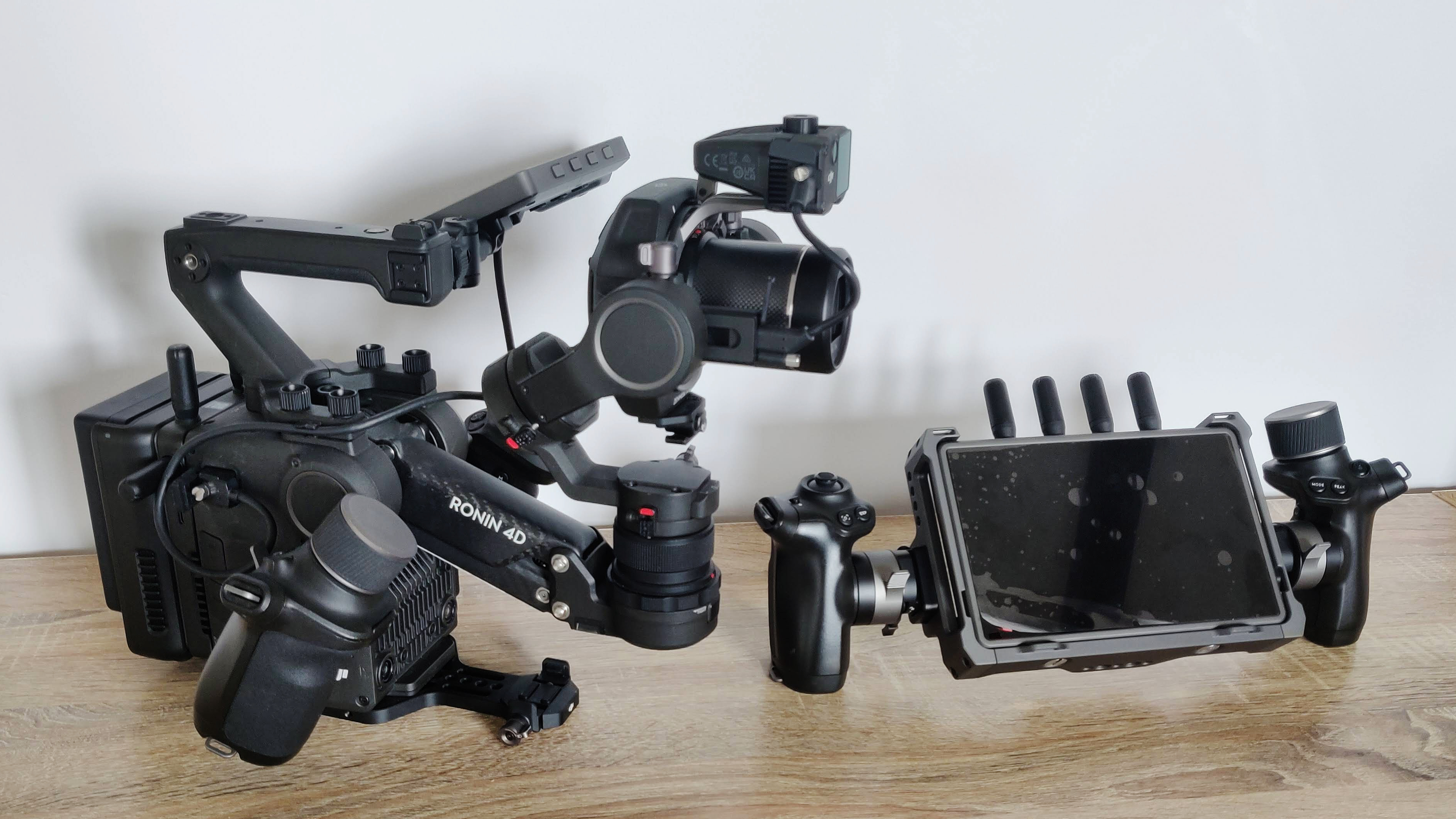
Specifications
Reasons to buy
Reasons to avoid
✅ You want smooth footage: With its built-in gimbal, your footage will be smooth all the time
✅ You want built-in NDs: This camera offers built-in neutral density filters that can change at a scroll of a wheel - perfect for the solo filmmaker on the go
❌ You like the handheld look: While you can lock the gimbal, there are better alternatives on the market.
❌ You want to use third-party accessories: This is a very niche camera and you can only get the accessories from DJI
Should we consider this a full-size or a portable cinema camera? It's designed for portable use, but it's quite a size. The DJI Ronin 4D 6K is unlike any other cinema camera out there.
You almost have to think about it in two parts - the body which consists of all the camera controls, screen, and gimbal arm, and then the DJI Zenmuse X9 camera. It's not a light bit of kit weighing almost 5kg but you've got to remember you won't need to add much weight to it as you would with other cinema cameras as it has a gimbal with 4-axis of stabilization built in.
It's definitely a different type of camera to get used to that will require some learning but for cinematographers who find themselves always using a gimbal or stabilization rig, it's well worth looking into.
It's also available in an 8K version for those who want even better resolution although is still able to record in ProRes 422 HQ and H.264 4:2:0 10-bit at various different frame rates (check out the review to see the full list).
Perhaps this is the future of cinema cameras, taking a more hybrid approach rather than needing modular systems where you need an additional kit. If you're new to videography and looking for an all-in-one package, it's certainly a good way of entering the world of film with a camera that can shoot anything, anywhere.
Read our full DJI Ronin 4D 6K review for more details
Specs | Outcome | Rating |
|---|---|---|
Resolution | 6K | ★★★★ |
Dynamic range | 14 stops | ★★★★ |
Usability | Solo filmmaking | ★★★★★ |
Best for documentaries
Specifications
Reasons to buy
Reasons to avoid
✅ You want huge ISO performance: For those who want to shoot in any environment the C70's ISO performance is amazing
✅ You want 4K slo-motion: With 4K 120p this is a great camera to offer slo-mo - it can even do 180fps in 2K!
❌ You want to use PL lenses: Equipped with an RF mount it limits you to RF-only lenses
❌ You want RAW: No RAW output might put off some documentary filmmakers
The Canon EOS C70 is like a remixed C300 Mark III. It packs the same Super35 sensor, Dual Gain Output, 16 stops of dynamic range, and 4K 120fps / 2K 180fps performance into a compact form factor more like a traditional stills camera.
It also packs a touchscreen that changes the game for Cinema EOS cameras, with touch control making it so much easier to maintain focus. For lone shooters, the C70 boasts the iTR AFX system from the Canon EOS-1D X Mark III, with head detection and spookily accurate autofocus.
The only cinema camera to use Canon's RF mount, it opens up a world of cutting-edge optics – and not only can you still use EF lenses, but a new Canon speed booster enables you to use them with an extra f-stop and a full-frame angle of view!
However, it doesn't record in raw and there's no option to use PL lenses – for that, you'll need to step up to the C300. For now, the C70 seems to be out of stock in most retailers but we're hoping it's just a supply chain issue and they'll be back soon.
Read our full Canon EOS C70 review for more details
Specs | Outcome | Rating |
|---|---|---|
Resolution | 4K | ★★★★ |
Dynamic range | 16 stops | ★★★★★ |
Usability | Solo filmmaking | ★★★★★ |
Best cheap 6K
Specifications
Reasons to buy
Reasons to avoid
✅ You want RAW: The BMPCC 6K Pro offers amazing RAW capabilities to offer super control over color grading
✅ You want a big screen With a massive rear screen you can easily adjust any setting with a touch
❌ You want autofocus: No autofocus here, just the cine standard manual focus - so get practicing!
❌ You want a tilting screen: While the screen is massive, unforgivably is does not tilt, which would be useful
We've just finished reviewing the Blackmagic Pocket Cinema Camera 6K G2, the new, 'entry level' 6K model, and it boasts many of the features in this Pro version. However, it's still the Pro model we would go for because for a little extra outlay, it offers a brighter screen and built-in ND filters.
The Blackmagic Pocket Cinema Camera 6K Pro is an evolution of the original 6K model, but while it might look like a mirrorless camera in its shape, you do have to get used to the handling from the odd size and large shape of the Super35mm Blackmagic Pocket Cinema Camera 6K Pro – which is certainly far from being pocket size. And the lack of continuous autofocus, image stabilization, or any auto-exposure can be an issue for some. It’s definitely not a run-and-gun camera. But if you use it as a tool for considered, cinematic shooting then it’s a bit of a steal as it produces rich, detailed files in raw or ProRes from its dual native ISO sensor.
Read our full Blackmagic Pocket Cinema Camera 6K Pro review
Specs | Outcome | Rating |
|---|---|---|
Resolution | 6K | ★★★★★ |
Dynamic range | 13 stops | ★★★ |
Usability | Solo filmmaking | ★★★★ |
Best for students
Specifications
Reasons to buy
Reasons to avoid
✅ You're a student: This MFT camera offers all the controls you need to learn the craft of filmmaking
✅ You want a RAW: At this price range having RAW is a godsend and will help you learn from possible mistakes
❌ You want full XLR support: While mini-XLR is supported you will need an adaptor to support full XLR mics which can cause a wired mess
❌ You want a tilting screen: While the screen is massive at 5-inches, it offers no tilt or cover from the sun
The Blackmagic Pocket Cinema Camera 4K looks great value for money today and it's an intriguing alternative for Olympus or Panasonic users who've already invested in MFT lenses.
It has some disadvantages, such as no continuous AF and a fixed screen, but this is a cinema camera, not a vlogging camera. It always comes back to bang for the buck with the Pocket Cinema Camera 4K.
When you consider the fact you have a mini XLR audio input as well as USB-C storage support for recording to hard drives, a full-sized HDMI port, and dual card slots, the Pocket Cinema Camera 4K leapfrogs the competition in almost every video-centric area.
Considering that the camera also ships with a full license for Davinci Resolve, an excellent bit of pro-video-editing software that normally costs $295/£239, the Pocket Cinema 4K is quite a bargain.
Read our full Blackmagic Pocket Cinema Camera 4K review
Specs | Outcome | Rating |
|---|---|---|
Resolution | 4K | ★★★★★ |
Dynamic range | 13 stops | ★★★ |
Usability | solo filmmaking | ★★★★ |
How to choose the best cinema cameras
As the prices of “industry-standard” cine cameras continue to drop, these powerful tools are becoming more accessible to videographers looking to elevate their craft. While shooting in 6K, 8K, or even 12K is certainly exciting, the real game-changers, and the things to focus on when choosing your cinema camera, lie in the form factor, advanced video codecs, and extensive connectivity options – essential elements for a seamless production experience.
One brand pushing the boundaries between consumer and cinema cameras is Blackmagic Design. The Pocket Cinema Camera 6K G2 is a standout example, capable of capturing stunning 6K RAW or Apple ProRes footage while supporting custom user LUTs. Even better, it comes bundled with DaVinci Resolve Studio—one of the industry’s top-tier editing programs (alongside Final Cut Pro and Adobe Premiere Pro)—all for under $2,000/£2,000. That kind of value is hard to beat.
While brands like Arri and Red dominate the ultra-high-end market, I’ve left them out of this guide, as their gear is often priced well beyond the reach of most filmmakers. Likewise, while many mirrorless cameras deliver impressive video quality, they lack the connectivity and workflow advantages of true cinema cameras. If you’re looking for hybrid stills-and-video options, check out our guides on the best cameras for filmmaking and the best cameras for video.
One of the most innovative cinema cameras today is the DJI Ronin 4D. Available in 6K and 8K versions, this “flightless drone” is the first cinema camera to feature 4-axis stabilization, significantly reducing the need for sliders or dollies by absorbing movement during walking or running shots– a game-changer for handheld cinematography.
Cinema cameras are as diverse as the projects they’re used for, so finding the right one depends on your needs and creative vision. Whether you’re looking for a full-size setup or something more portable, there’s a cinema camera here to match your workflow.
Mirrorless vs cinema cameras: what's the difference?
The definition of a cinema camera isn’t always clear-cut. Some argue it’s any camera designed specifically for video rather than stills, while others point to factors like size, lens mount, or the ability to shoot in RAW or ProRes.
New Form Factors
Hybrid cameras are blurring the lines between stills and cinema. Take the Sigma fp and Sigma fp L – both are stills/video hybrids, but their modular form factor and cine-focused interface make them worthy contenders in this space.
8K Isn’t Everything
High resolution often grabs headlines, as seen with the Canon EOS R5 and Sony A1, both of which offer 8K recording. However, these are still primarily stills cameras with video capabilities, not dedicated cine cameras. If you’re looking for true cinema tools, models like the Canon EOS C70 or Sony FX3 are better suited to professional filmmaking.
Cinematography vs. Filmmaking vs. Vlogging
If you’re searching for the best vlogging camera, the models in this guide will likely be overkill. Not only are most of them expensive, but they also require technical expertise to get the best results. If you need a more versatile camera, our guides on the best mirrorless cameras or best cameras for video may be more helpful.
This guide focuses on cameras built specifically for professional film and TV production. To keep things organized, we’ve divided it into two sections:
High-end, modular cinema cameras – These are your "A" cameras, designed for professional sets with top-tier specs and extensive customization options.
Portable cinema cameras – These serve as "B" cameras, perfect as backups in professional environments or as primary cameras for independent filmmakers and solo video shooters ready to take their work beyond vlogging.
Whether you're looking for a full-fledged production setup or a compact but powerful alternative, there’s a cinema camera here to match your creative needs.
How we test cameras
We test cameras both in real-world shooting scenarios and in carefully controlled lab conditions. Our lab tests measure resolution, dynamic range and signal to noise ratio. Resolution is measured using ISO resolution charts, dynamic range is measured using DxO Analyzer test equipment and DxO Analyzer is also used for noise analysis across the camera's ISO range. We use both real-world testing and lab results to inform our comments in buying guides.
Read more:
Best cine lenses
Best 8K camera
Best 4K camera for filmmaking
Best audio recorders
Best video editing software
The best laptop for video editing
Best camera sliders
The best on-camera monitors
Compare today's prices
The best camera deals, reviews, product advice, and unmissable photography news, direct to your inbox!

For nearly two decades Sebastian's work has been published internationally. Originally specializing in Equestrianism, his visuals have been used by the leading names in the equestrian industry such as The Fédération Equestre Internationale (FEI), The Jockey Club, Horse & Hound, and many more for various advertising campaigns, books, and pre/post-event highlights.
He is a Fellow of the Royal Society of Arts, holds a Foundation Degree in Equitation Science, and holds a Master of Arts in Publishing. He is a member of Nikon NPS and has been a Nikon user since his film days using a Nikon F5. He saw the digital transition with Nikon's D series cameras and is still, to this day, the youngest member to be elected into BEWA, the British Equestrian Writers' Association.
He is familiar with and shows great interest in 35mm, medium, and large-format photography, using products by Leica, Phase One, Hasselblad, Alpa, and Sinar. Sebastian has also used many cinema cameras from Sony, RED, ARRI, and everything in between. He now spends his spare time using his trusted Leica M-E or Leica M2, shooting Street/Documentary photography as he sees it, usually in Black and White.
